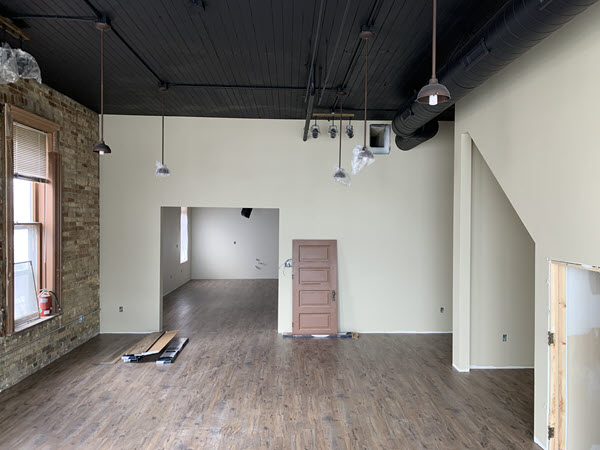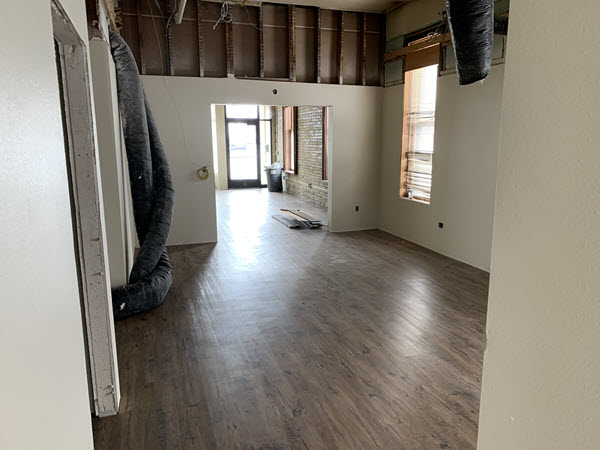Life on the Road Blog: Production and Planning


Create a System to Stay on Track
Quite a bit has transpired in the last month. Continued construction at my new store and studio has gone smoothly, and we are approaching our move-in date rapidly. Spring is here and trying to keep up with running a business as I coordinate the big move is the big challenge.
Give Thanks
First things first, though. And it is something we all too often forget to do as we get completely focused on our art and the business of everyday life. Give thanks. Thank the people who are close to you for their love and support. Thank the people who help make your life and career possible. For me, remembering to thank God for all that has been given to me is something I neglect too often.
In short, none of us would be able to do what we love to do — make and sell art — if it weren’t for the love and support of so many people in our lives.
And as you make your lists (mine is getting awfully long), don’t forget to sincerely thank the show promoters, your suppliers, and the other people and businesses that help keep your business up and running. Yes, they are in business to make money, same as us.
If it weren’t for them going out on a limb, taking the risks, and doing all the background work that no one ever sees, we would not be able to do what we do. Take some time to thank the people who help to make your life possible.
The Things They Never See
Which brings me to what this month’s article is about — production and planning. When is the last time you had someone come into your tent at a show and ask you, “How long did it take you to make that?”
We’ve all experienced it, and most of us bristle at the question because it somehow implies that the cost of the item is not commensurate with the time it took to make it.
As a potter, I usually take the easy way out and talk about the time being hard to measure because of all the steps in the process and how long it takes in between each of the steps. If I am feeling particularly naughty, however, I’ll respond with, “That’s not the right question. The real question is, ‘How long would it take you to make it?’”
Time to Make the Doughnuts
Whether a potter or painter, a quilter or woodworker, a glass artist or basket weaver, each of us put a great deal of energy and effort into what we do. As a production potter, time is critical, workflow and efficiencies are important, and always keeping sufficient supplies in stock so I can keep producing without a shutdown is imperative.
When I switched over from being an attorney, I had a steep learning curve when it came to not just retail and marketing, but most importantly to keeping production flowing smoothly. I learned very quickly that if I ran out of clay, or glaze, or other materials, I could lose a week, two, or even worse.
Losing weeks of production time while you wait for supplies can kill a business. Lost production means not enough product for the next show, the store, your gallery consignment, or a wholesale order. One of my survival techniques to prevent this from happening was to borrow an old trick from my life as an attorney — create a “tickler” system.
A tickler system is a way of incorporating notes into your calendar to remind you about deadlines. If I had a brief due in two months, I’d put reminders in my calendar a month, two weeks, and one week before the deadline. This way that all important deadline (or in our case, empty supply closet), doesn’t just hit you when it is too late to do anything about it.
Keep a log of your supplies and check them frequently to keep track of how close you are to needing to order more. I place orders for new supplies when I have about one month worth of clay left. Remember, things need to ship, so it is important to order far enough in advance that you build in a cushion in case things are running late.
At present, certain supplies are getting harder to find. When you do find them, assuming that they are not perishable, try to stockpile what you can afford and what you are able to store.
Your business depends on being able to continue to produce. Take the steps that you can to assure a steady production flow.
Filling Your Dance Card
Another part of our jobs, which our customers often don’t understand, is all the preparation it takes to develop a show schedule. This is one of the things I call “underwear work” — it’s something no one will ever see but it is awfully important to take care of.
How many shows can/should I do? What geographic locations are within my range? What is the furthest I can go and still be profitable? What shows look promising? Which shows from the past year are ones I want to be in again? Which show promoters have I had good experiences with?
All these things, and a dozen more, enter each of our equations when determining our coming year.
I try to set my schedule as far in advance as possible. As soon as applications open for a show, I try to get mine in. One less thing to forget to do and, if you complete them as they become available, it is far less overwhelming.
Apply for more than one show on the busiest weekends. Yes, you will pay multiple jury fees, but you have better chances of filling up your schedule.
Also, never take it for granted that you will “automatically” be accepted into a show unless that is something the show does as a perk. When possible, try to get into shows with promoters who jury you in for more than one show/year (some will jury you in for three years at a time) as it is much easier to organize a schedule when you can count on certain weekends already being accounted for.
For me, shows that involve travel longer than eight hours are generally too far away to be profitable. When I do travel, I try to link as many shows as possible to cut down on the travel time and expenses.
Try to get hotels or Airbnbs that have some type of kitchen facilities so you can make your own food while on the road and not be dependent on restaurants. It is far healthier and a lot less expensive.
Figure out what hotels you have the best luck with. This is important for me since all my friends and family tease me about my “hotel curse.”
I’ve had enough of staying at places where the room looks like a crime scene or was recently inhabited by crazed racoons who ate the wiring. I’m actually not kidding.
Look to resources like Sunshine Artist and other reviews that are available about different shows. Spend some time researching the show and the town it’s in.
A few minutes online can mean the difference between a successful weekend and a wasted opportunity. Remember, when you pick a bad show, you not only incur the costs of that show, but the lost sales of the one that you could have done.
Find good, reputable promoters who want to develop a long-term professional relationship with you and who want you to succeed. They are one of your best allies and can help in building your business.
If you do multiple shows with the same promoter, you will know the rules of the venues and what is expected of you. You will also develop a relationship with the promoter so that if there is a problem or a crisis, they will be quick to come to your aid. Best of all, some of those relationships will turn into friendships.
Show season is upon us, and it is time to start packing up the truck. Looking forward to next month when we can start talking about show experiences and yes, I may even tell one of my “hotel curse” stories. Have a great month!
About the Author
Scott Obernberger runs Twice Baked Pottery in Jefferson, Wisconsin. The former attorney will discuss his creative journey and the lessons he learns along the way in this column for Sunshine Artist. Learn more about Scott and his business at www.twicebakedpottery.com.
